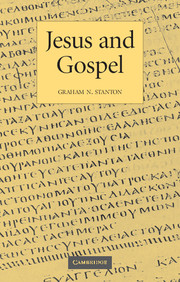1 - Introduction
Published online by Cambridge University Press: 21 December 2009
Summary
The main lines of inquiry pursued in this book are nearly all foreshadowed in the lengthy, wide-ranging Chapter 2, ‘Jesus and Gospel’. Here I explore the origin and the varied meanings of the ‘gospel’ word group all the way from its use by Jesus to refer to his own proclamation to its use as the title of a ‘book’ containing an account of the words and deeds of Jesus.
Although the term ‘gospel’ is as prominent in Christian vocabulary today as it ever has been, there have been very few detailed studies in English of the word group. It is difficult to account for the silence. Part of the answer may lie in the onslaught James Barr launched in 1961 against the then fashionable word studies. Only a fool would try to turn the clock back and ignore Barr's strictures. But I am not alone in thinking that it is now time to reconsider some of the most important theological terms developed by the earliest followers of Jesus. Of course, full attention must be given both to the whole semantic field of which a given word group is part and to the varied social and religious contexts in which it is used. I shall argue that, when that is done, we find that, in the decade or so immediately after Easter, followers of Jesus developed language patterns which differed sharply from ‘street’ usage in both the Jewish and the Graeco-Roman worlds.
- Type
- Chapter
- Information
- Jesus and Gospel , pp. 1 - 6Publisher: Cambridge University PressPrint publication year: 2004



